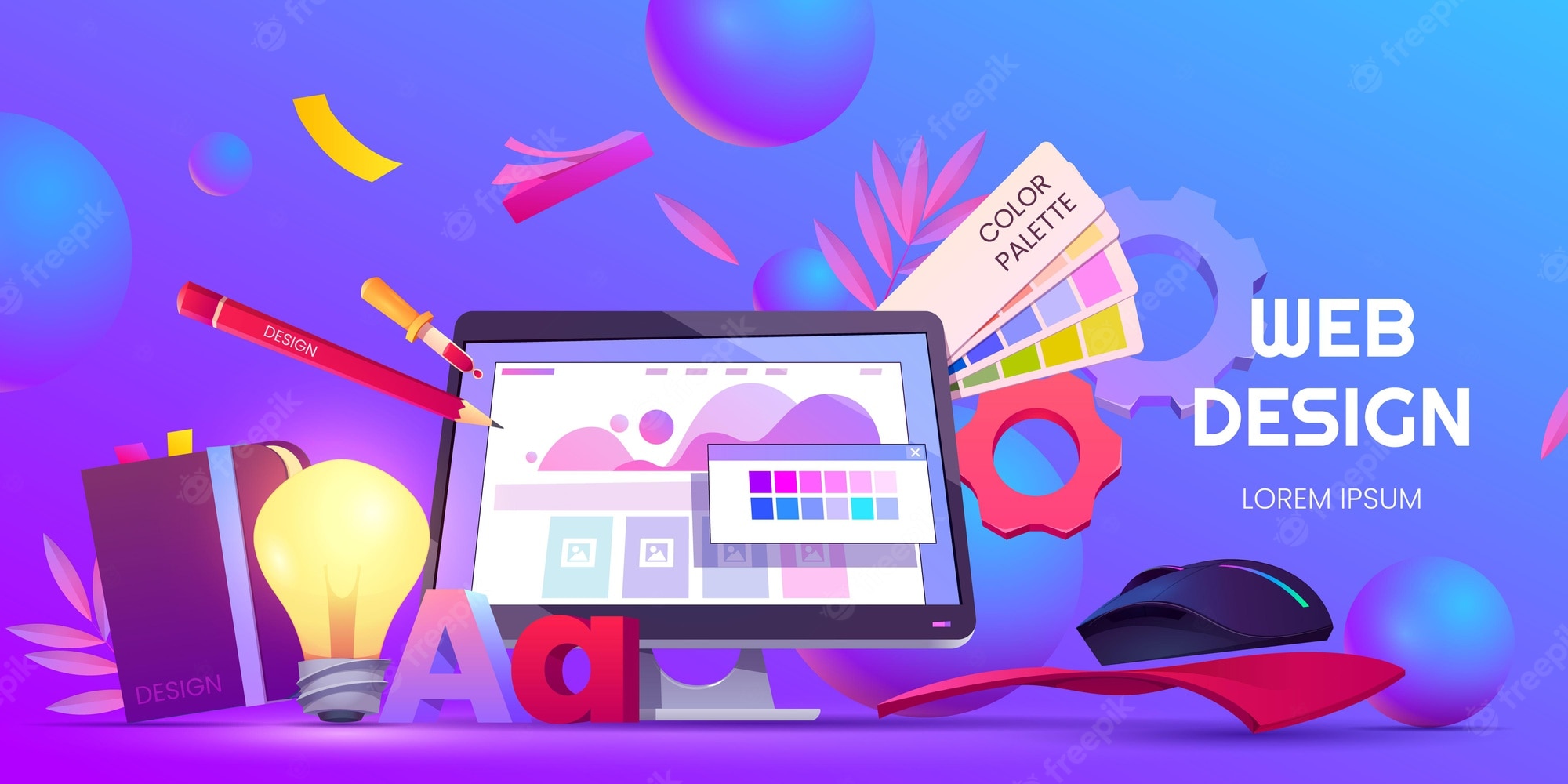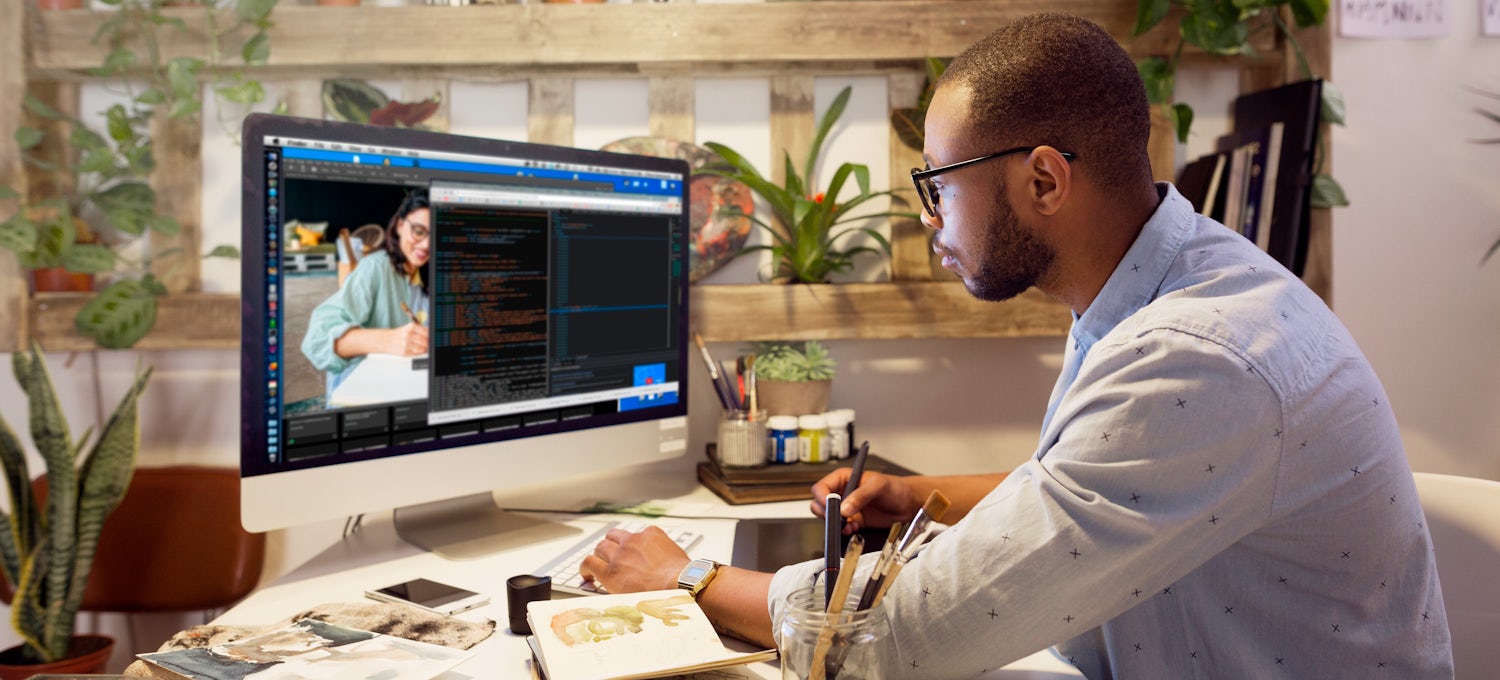Exploring Innovative Patterns in Web Design for Modern Businesses
The landscape of web design is continuously developing, reflecting the vibrant needs of modern-day services. Recent patterns highlight a preference for minimalism, strong typography, and engaging interactivity. Business significantly focus on user experience with mobile-first concepts and personalized web content. In addition, a concentrate on sustainability is obtaining grip. Understanding these fads is vital for companies intending to stick out in a jampacked market. What implications do these changes hold for the future of digital involvement?
Welcoming Strong Typography
Vibrant typography has arised as a specifying aspect in contemporary web design, capturing attention and sharing messages with striking clearness. This trend prioritizes visually impactful message that boosts user engagement and brand name identity. Designers typically make use of one-of-a-kind fonts and extra-large fonts to develop a power structure, directing viewers via web content seamlessly.
The strategic use vibrant typography permits efficient storytelling, allowing brands to interact their values succinctly. It serves not just visual functions however additionally useful ones, as it boosts readability throughout devices and screen sizes.
As internet sites contend for user interest, strong typography stands apart in a saturated electronic landscape. Its flexibility allows developers to trying out contrasting layouts and colors, better enhancing its efficiency. Inevitably, accepting strong typography represents a change in the direction of more meaningful and communicative web design, fostering a much deeper link between brand names and their audiences.
The Surge of Minimalist Layout
As digital environments end up being increasingly chaotic, the increase of minimal design uses a renewing option that focuses on simpleness and capability. This style ideology remove unnecessary components, allowing content to take spotlight. By focusing on tidy lines, enough white space, and a minimal shade scheme, minimal design enhances user experience and boosts navigation.
Businesses adopting this fad goal to communicate their brand name message plainly and efficiently, fostering a feeling of calm and quality. The lack of diversions assists customers focus on essential details, bring about improved engagement and conversion rates. Additionally, minimal layout straightens well with mobile-first techniques, guaranteeing that internet sites remain obtainable and easy to use throughout numerous devices.
Inevitably, the rise of minimalist layout mirrors a wider shift in the direction of focusing on user requirements and preferences, making it a powerful tool for contemporary businesses wanting to make a long-term effect in the digital landscape.
Immersive Animations and Interactivity
While several internet developers welcome minimal appearances, an additional engaging pattern gaining grip is using immersive computer animations and interactivity. This strategy improves user interaction by developing interesting experiences that draw site visitors right into the web content. Designers employ dynamic aspects such as animated histories, scrolling results, and interactive infographics to communicate intricate ideas in an obtainable fashion.
These computer animations not only provide visual passion yet also overview customers with the navigating procedure, making communications a lot more intuitive. As an example, float impacts and animated shifts can encourage customers to discover even more, bring about enhanced time invested in the site.
Moreover, this fad straightens with the wider motion towards storytelling in web design, where animations serve as narrative gadgets that share brand messages efficiently. By incorporating immersive animations and interactivity, companies can separate themselves in a crowded online landscape, eventually enhancing user satisfaction and brand name loyalty.
Mobile-First Style Principles
Mobile-first design concepts highlight focusing on user experience by ensuring sites operate effortlessly on smaller displays. This strategy integrates responsive design methods that adjust to various tool dimensions while maintaining visual honesty. Additionally, it focuses on touchscreen navigation style, improving usability for mobile customers.
Prioritizing User Experience
How can designers effectively prioritize user experience in a significantly mobile-centric globe? Highlighting mobile-first layout principles is necessary, as individuals mainly engage with internet sites via mobile tools. This approach encourages developers to enhance material, ensuring it is navigable and easily available on smaller sized screens. Trick practices include streamlining navigation, reducing lots times, and using touch-friendly elements that enhance interactivity. In addition, prioritizing readable typography and instinctive layouts can greatly boost user complete satisfaction. Developers must continuously gather user feedback to fine-tune their methods, adapting to progressing user requirements and choices. By focusing on these components, businesses can create an appealing digital experience that fosters loyalty and drives conversions, eventually lining up with the assumptions these days's mobile customers.
Receptive Design Strategies
Designers accept receptive design techniques to create flexible and versatile web experiences that accommodate numerous display dimensions. This technique focuses on mobile-first design concepts, making certain peak functionality on smaller sized devices prior to scaling up for larger screens. By utilizing liquid grids, flexible photos, and media queries, developers can preserve a cohesive aesthetic identification across all systems. This strategy not just enhances user involvement however also enhances internet search engine positions, as mobile-friendly websites are favored by search algorithms. Additionally, receptive formats permit businesses to get to a wider audience, fitting customers on tablets, desktops, and smart devices alike. Overall, executing these techniques is crucial for modern web design, making certain that organizations stay affordable in an ever-evolving electronic landscape.
Touchscreen Navigation Layout
With the rise of smart phones, touchscreen navigating has actually come to be an discover here essential facet of web design. Designers are progressively adopting mobile-first concepts to enhance user experience and involvement. agency for web design. Effective touchscreen navigation focuses on bigger switches and user-friendly gestures, allowing customers to engage easily look at this web-site with material. This strategy minimizes aggravation and motivates expedition, as users can navigate flawlessly with their fingers. Furthermore, integrating swipe motions and faucet capability caters to the natural actions of mobile customers. Feedback systems, such as visual hints and animations, boost use even more by confirming activities. As touchscreens control user communications, using these design components not just lines up with contemporary assumptions yet additionally promotes an extra accessible and enjoyable browsing experience for all customers
Individualized User Experiences
What makes an individual really feel really involved on a site? The solution usually depends on individualized user experiences. By tailoring material and navigating to private preferences, companies can produce a significant link with their audience. This personalization can be attained with different methods, such as assessing user habits, making use of cookies, and providing personalized referrals based on previous communications.
E-commerce platforms that suggest items based on searching history not only improve user experience but additionally raise conversion prices. Additionally, integrating dynamic material that adjusts to the user's location or time of you could try this out day can further improve involvement.
Additionally, personalized greetings or messages can make customers feel valued and understood. As modern businesses seek to attract attention in an affordable digital landscape, welcoming tailored user experiences ends up being necessary, promoting loyalty and encouraging repeat sees. Inevitably, this technique transforms a standard internet site into an interactive system that reverberates with its target market.
Sustainability in Web Design
As the electronic landscape continues to progress, the significance of sustainability in web design has actually obtained considerable focus. Designers are progressively knowledgeable about the environmental effect their creations can have, motivating a shift in the direction of eco-friendly methods (web design company). Lasting web design focuses on enhancing internet sites to minimize power usage and carbon impacts. Methods include using minimalistic style principles, optimizing images, and employing effective coding practices to enhance loading speeds
In addition, the selection of organizing carriers plays a vital function; many designers are currently choosing eco-friendly organizing solutions powered by renewable resource. By prioritizing availability and easy to use navigation, sustainable styles also deal with a more comprehensive audience, improving use. This aware approach not only appeals to environmentally-minded consumers but likewise contributes to the general longevity and performance of sites. Inevitably, sustainability in web design shows an expanding fad in the direction of responsible electronic methods that line up with modern-day business worths.

Frequently Asked Concerns
Just How Can I Choose the Right Color Design for My Site?
To pick the best color design for an internet site, one should think about the brand's identity, target market, and psychological impact. Utilizing color theory and screening mixes can enhance user experience and visual appeal significantly.
What Are the most effective Devices for Prototyping Website Design?
The best devices for prototyping web styles consist of Figma, Lay out, Adobe XD, and InVision. These platforms supply instinctive user interfaces, cooperation features, and extensive libraries, making them suitable for designers to produce and improve their principles effectively.
Just how Do I Gauge the Efficiency of My Web Design?
To measure web design performance, one ought to examine user engagement metrics, conversion prices, and use feedback (Web Design Agency). A/B testing and heatmaps can additionally offer understandings right into user behavior, directing necessary adjustments for better efficiency and user experience
What Are Typical Web Design Mistakes to Stay Clear Of?
Usual web design blunders include cluttered formats, bad navigation, slow-moving filling times, lack of mobile optimization, insufficient contrast, and ignoring user feedback. Preventing these pitfalls improves user experience and boosts general efficiency of the website.
Just how Commonly Should I Update My Web Site Style?
An internet site style must be updated every 2 to 3 years, or faster if substantial changes in branding or modern technology take place. Regular updates maintain the website fresh, useful, and aligned with existing user expectations.
